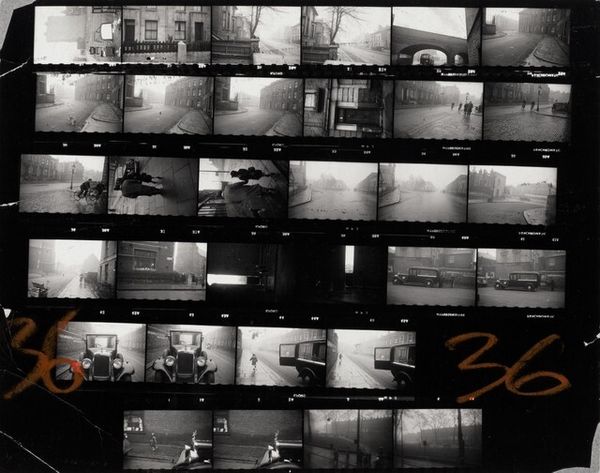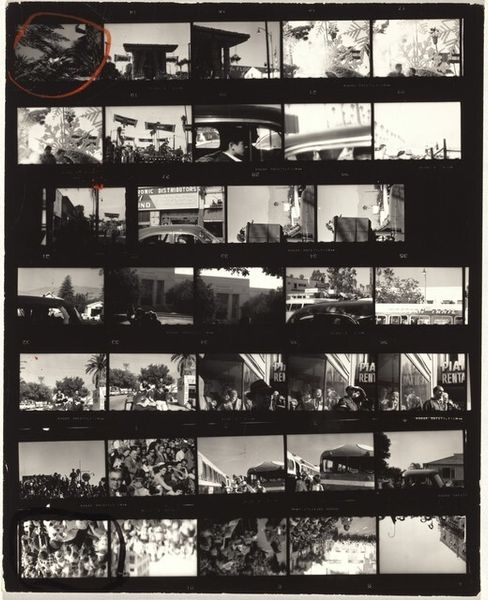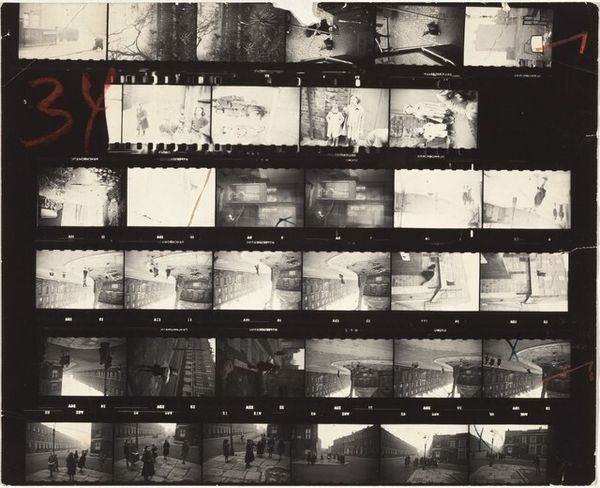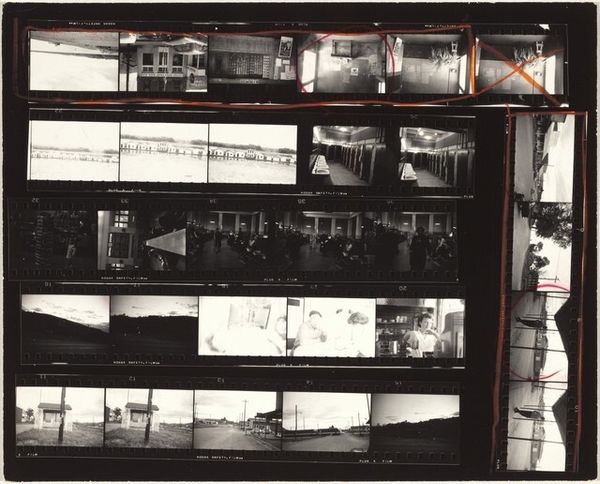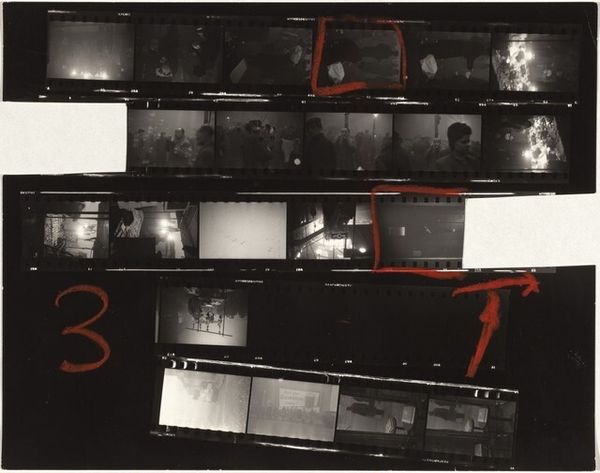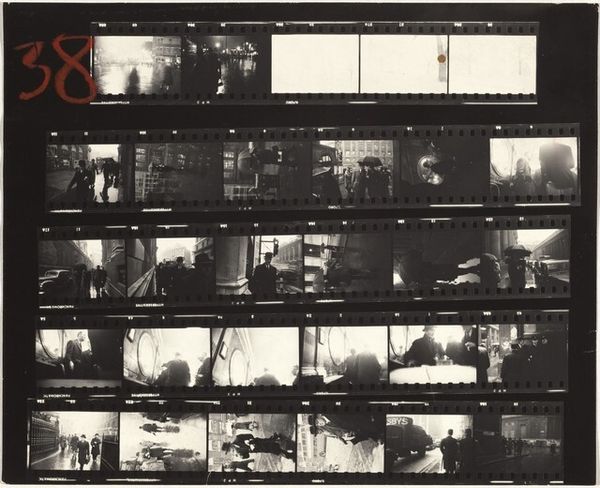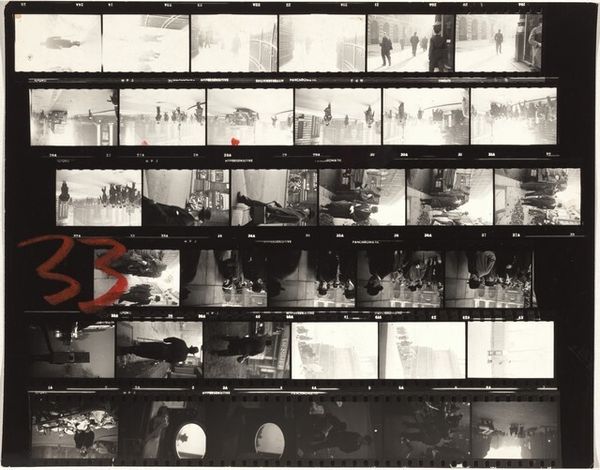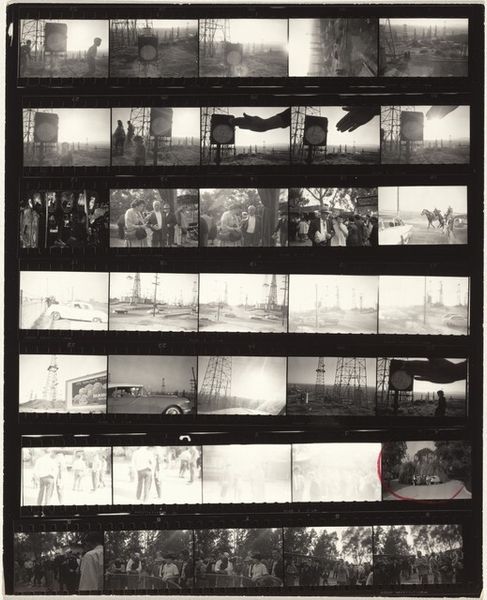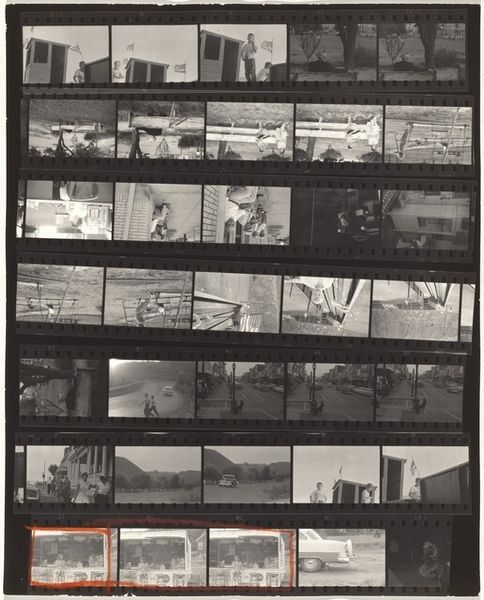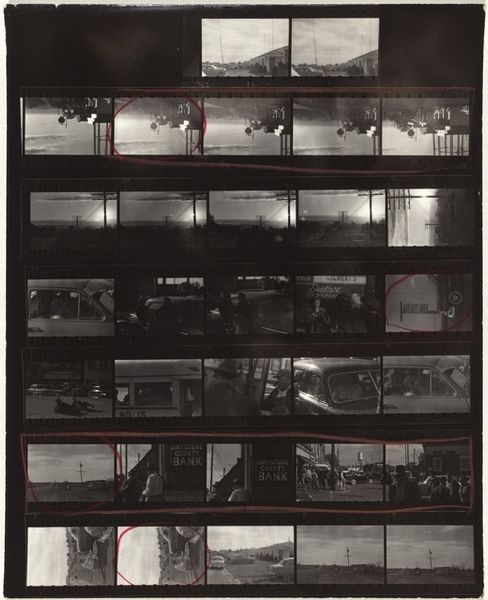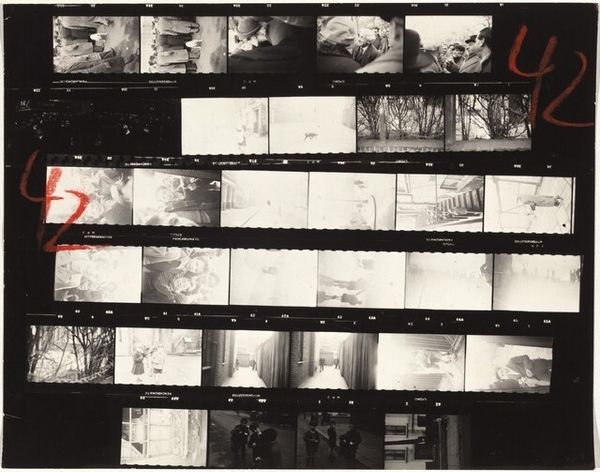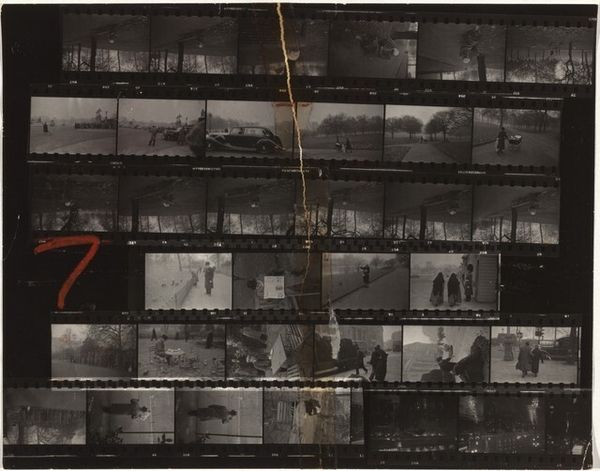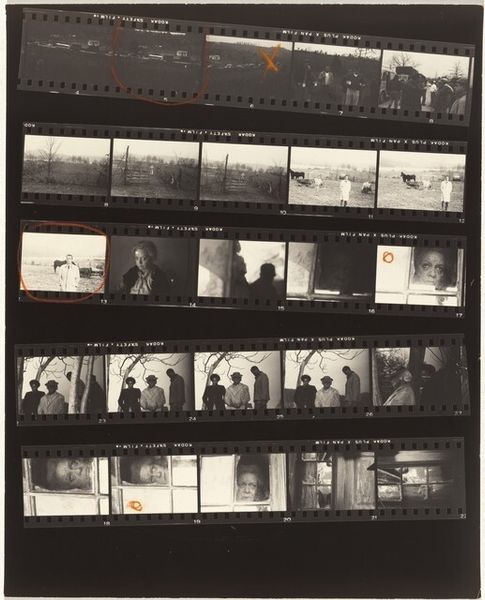
photography, gelatin-silver-print
#
abstract-expressionism
#
film photography
#
landscape
#
outdoor photography
#
street-photography
#
photography
#
gelatin-silver-print
#
cityscape
#
modernism
Dimensions: overall: 20.3 x 25.8 cm (8 x 10 3/16 in.)
Copyright: National Gallery of Art: CC0 1.0
Curator: Here we have Robert Frank’s "London 30," a gelatin-silver print made between 1952 and 1953. My eye is immediately drawn to this image’s unusual presentation; instead of showing us a single, selected print, Frank gives us an entire strip of film. Editor: It feels raw and a bit melancholic. The images themselves—cityscapes, solitary figures, what looks like a horse-drawn carriage—are evocative, but presenting them in the uncut film format emphasizes process and selection, almost like he’s inviting us into his darkroom. You see his decision making, right there, on the dark frame. Curator: Precisely! He gives us access. Consider what each scene may represent, not only individually, but collectively. Notice how visual themes develop from frame to frame: the theme of solitude, the bleak urban landscape, and that ethereal light. Also notice that large number “30” in bright red paint. It begs the question of the meaning that the artist associated with that particular series of frames. Editor: And I’m also interested in the way the artist calls attention to photography as a physical object. These strips have sprocket holes; we can see the edges where the film was developed. It underscores the materiality of the process. I imagine Frank developed them and printed them himself, right? The texture tells us this is very much a labor-intensive handmade photograph rather than a machine-generated image. Curator: It's a powerful combination. Frank, of course, famously captured what he saw as the soul of America a few years later. But here in London, perhaps he's revealing a similarly nuanced, less celebratory vision. The unvarnished depiction, not just of the scene but of its very means of production, suggests a world less polished, more immediate. Editor: The materiality here almost anticipates a shift in our cultural attitude. Post-war, this almost looks like pre-packaged nostalgia: both the scene and the making call to mind how much cheaper it used to be to get your milk and coal delivered, maybe? Curator: A fascinating interpretation. It suggests we consider London here as not just a physical place but an idea, an ever-shifting collection of symbols and memories, fixed and re-presented by Frank's vision. Editor: Agreed, a material snapshot not just of London, but of photographic history and a bygone age itself. Curator: And so this remarkable, reflective piece opens dialogues between place, memory, and meaning, across time and place. Editor: It makes you really wonder, where is London now?
Comments
No comments
Be the first to comment and join the conversation on the ultimate creative platform.
